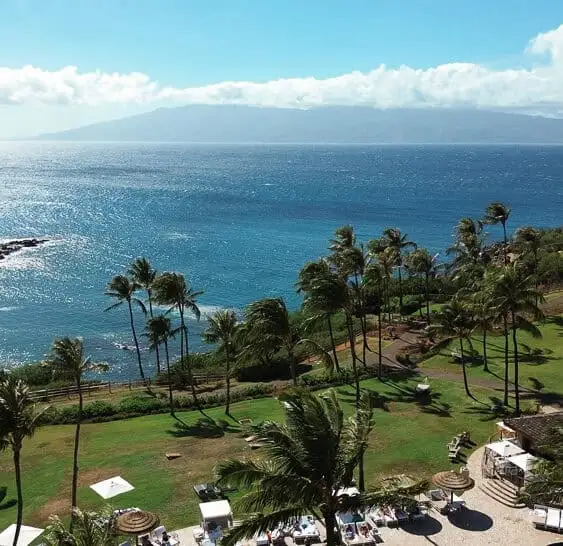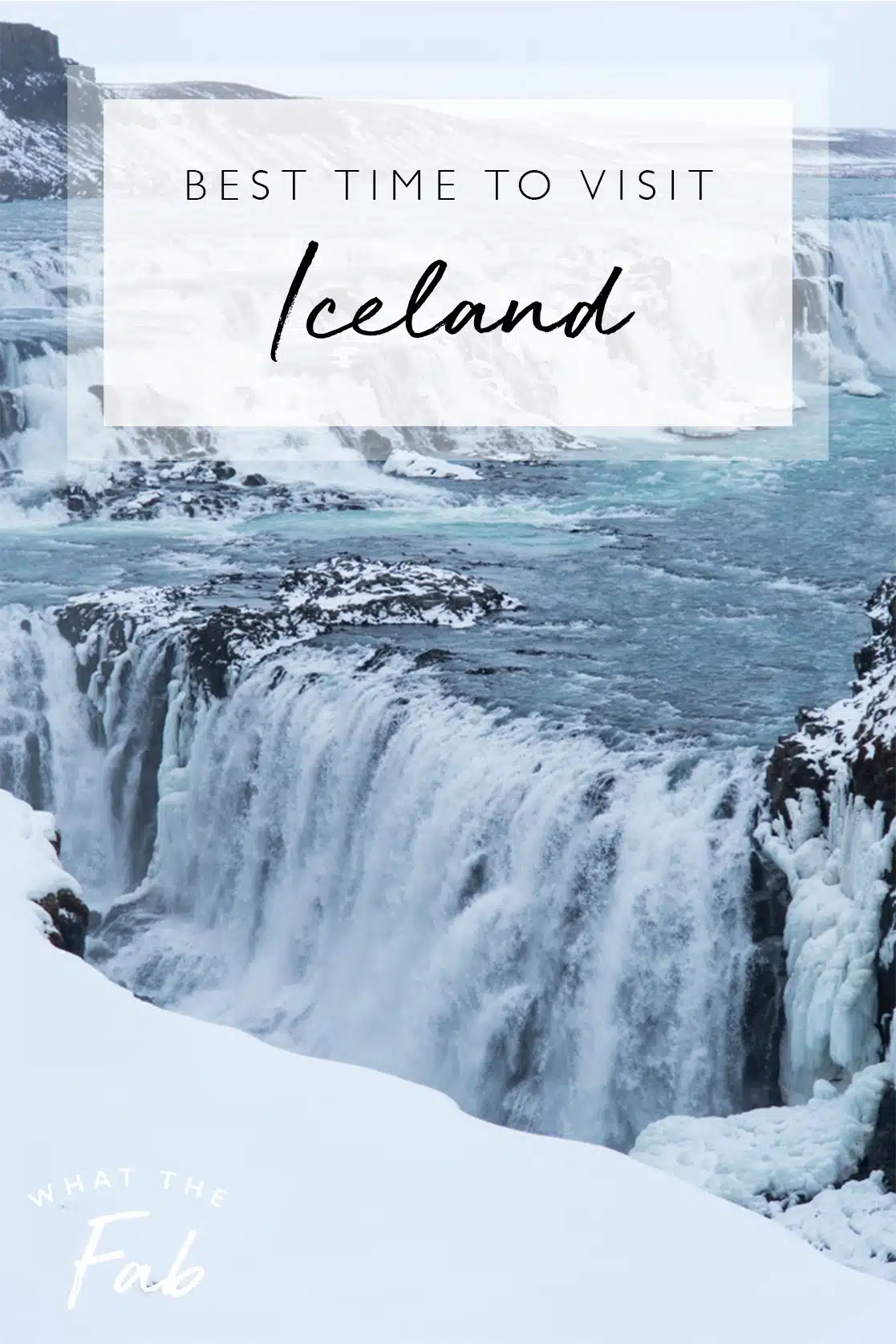
Iceland is a magical country! It’s one of my favorite trips we’ve ever taken because it’s just so unique.
Visiting Iceland is amazing due to the amount of cool stuff you can do here—from seeing the Aurora Borealis (aka Northern Lights) to taking a dip in the Blue Lagoon.
A trip to Iceland is bound to be awesome, but if you’re wondering just when is the best time to visit Iceland, I’ve got you covered!
Pssst, heading to Iceland? Don’t miss these travel guides to help you plan your trip!
Iceland Travel Guide
Iceland Airbnbs
What to Pack for Iceland
Where to Stay in Iceland along the Ring Road
I’ve made this guide to give you all the travel tips you need, whether you choose to visit Iceland in winter, spring, summer or fall!
The Best Time to Visit Iceland
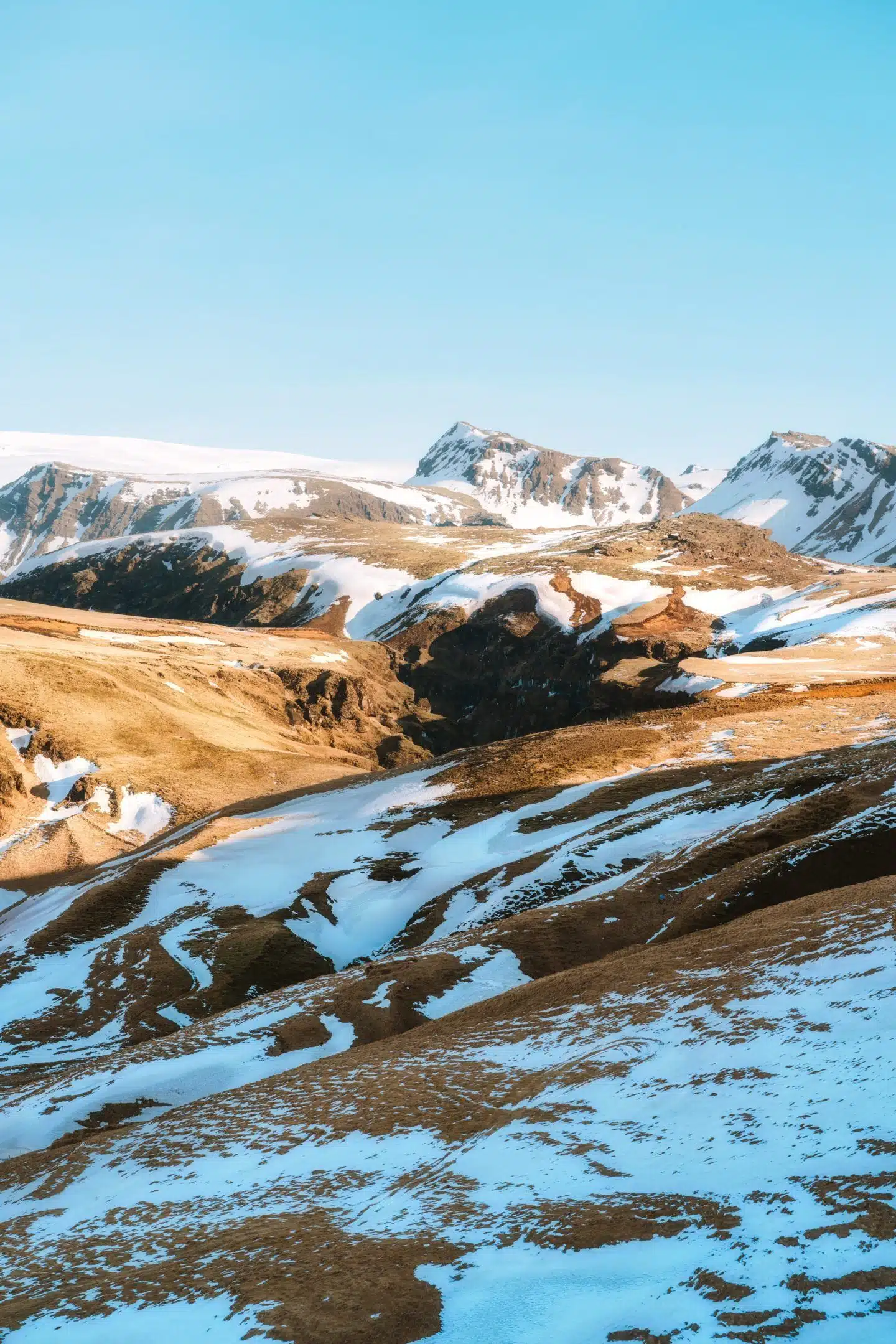
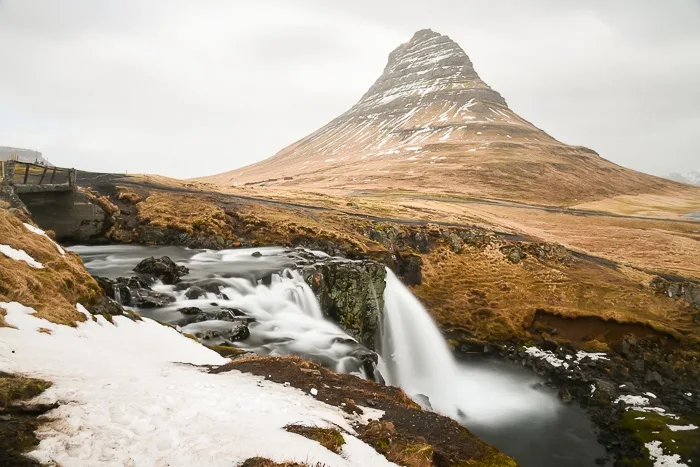
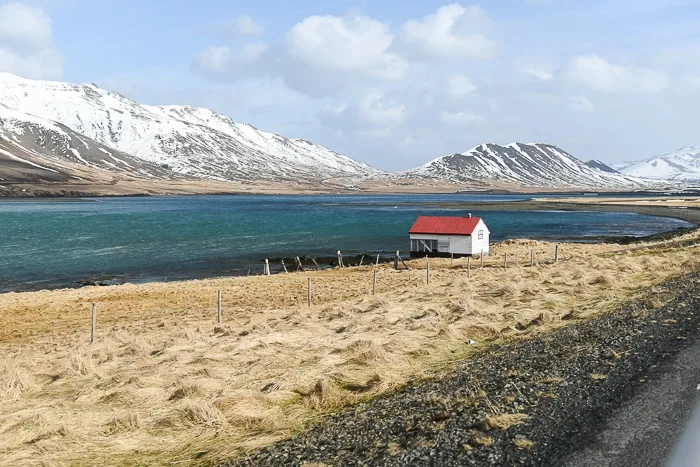
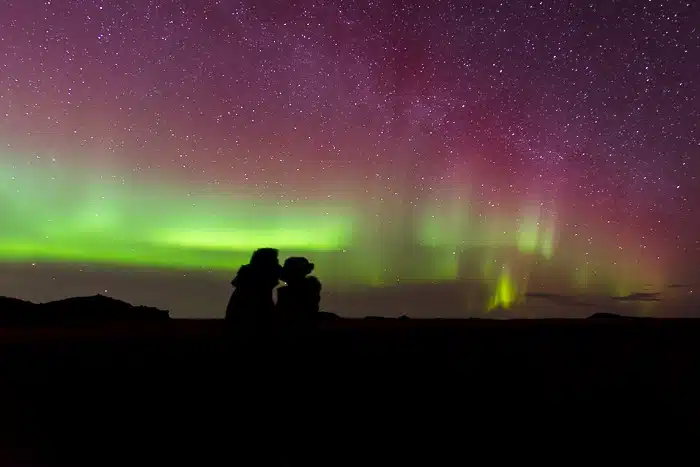
Best Time to Visit Iceland: Spring in Iceland
Although spring might signal the end of cold days and long dark nights in much of the world, in Iceland, spring is still very much low season—and cold.
But just because there won’t be the long lazy days of the summer months, doesn’t mean that you shouldn’t think about traveling to Iceland in Spring.
In fact, it’s a really beautiful time of year to experience the stunning natural scenery as mother nature starts to wake up after a long winter. There’s also the added bonus of fewer tourists than in high season—and with that, cheaper prices for accommodation!
Weather in Iceland in Spring
Spring in Iceland runs from March until June—you can expect more sunshine as the season wears on, but don’t go expecting warm temperatures.
Iceland in April gets between 13 and 16 hours of sunlight each day; that’s an amazing amount of glorious vitamin D compared to the long 20 hours of darkness in the winter months. And, as the months get closer to summer, there’s plenty of bright sunlight to bask in.
Reykjavik’s highest temperature in March is 49°F with lows of 44°F….things are pretty cold!
But that doesn’t mean that spring hasn’t got a lot to offer: this is a stunning country and there is no end of natural sights for you to soak up as the snow begins to melt.
Activities in Iceland in Spring
It might take a little bit more planning to explore some of the further out destinations around the famous Ring Road, but all you will need to do is spend a little more time researching and planning.
Some roads might still be shut during the spring months, as they become impassable due to snow and icy conditions. Even if they are open, they can be closed at short notice for safety reasons.
Don’t worry too much about road closures though; there are still plenty of interesting places that you’ll be able to check out.
Many of the sights along the Golden Circle and the south coast of Iceland should all be accessible to you and are pretty much a top option at this time of year.
The famous Golden Circle is the most popular tourist route in the country: in the summer months, it gets very busy. Renting a car and driving the Golden Circle in spring means fewer crowds, but still plenty of breathtaking landscapes.
In fact, spring is a pretty spectacular time if you want to get out and about into nature.
Those of you who are into hiking will be able to join in with the locals, who will be more than happy to make the most of the longer days. It’s still important to be careful though: the melting ice can cause conditions to be pretty slippery at times. Make sure you plan a hike in advance!
Skiing is also an option in spring, with the season lasting all the way from November until May. There’s a selection of ski resorts, with a choice of ski slopes and some cross-country skiing to try out, too.
Alternatively, if you would rather just sit back and relax during your vacation (I totally would), then hanging out in hot springs will probably sound more like your idea of fun. Iceland’s hot springs are heaven on earth—the perfect way to warm up on a crisp and sunny spring day.
The northern lights are still visible until around April. Although their appearance becomes less reliable, you’ll still have a chance of spotting them. Head out into the wilds of the countryside—away from any light pollution—for your best chance.
And with the cold of the winter months slowly slipping away, the natural world begins to awaken…
Wildlife in Iceland in Spring
In April, the golden plover—the national bird of Iceland—returns after migrating for the winter months. Not only is this little guy cute, but his return to Iceland also marks the start of spring properly! Yay!
And there’s more wildlife to get out and about to spot as well. The puffins also make their way to Iceland in April, though it might not be in the same numbers that you will be able to see later on in the year.
The best time to spot puffins is at the end of spring until mid-summer, but you will still be able to spot one or two early birds hanging out.
Spring also means whales!
If spotting whales out in nature is on your bucket list, then you’ll be in luck if you’re in Iceland in Spring.
Up in Akureyri—northern Iceland—the whale watching tours are a totally memorable way to see these amazing mammals out on the open ocean.
You could be in the with a chance of seeing humpbacks, minke, and fin whales, or if you’re lucky, even a blue whale.
Festivals in Iceland in Spring
If you want to get involved with local life while you’re on vacation in Iceland then there are a few festivals you should know about.
April 23 is the first day of summer, according to the old Norse calendar. You should expect parades and celebrations in towns and cities—a super fun time to be in Iceland.
There’s also the Aldrei Fór Ég Suður—or “I Never Went South” festival. This music extravaganza is a free event and opens for all to come and experience live performances by all sorts of different musical acts.
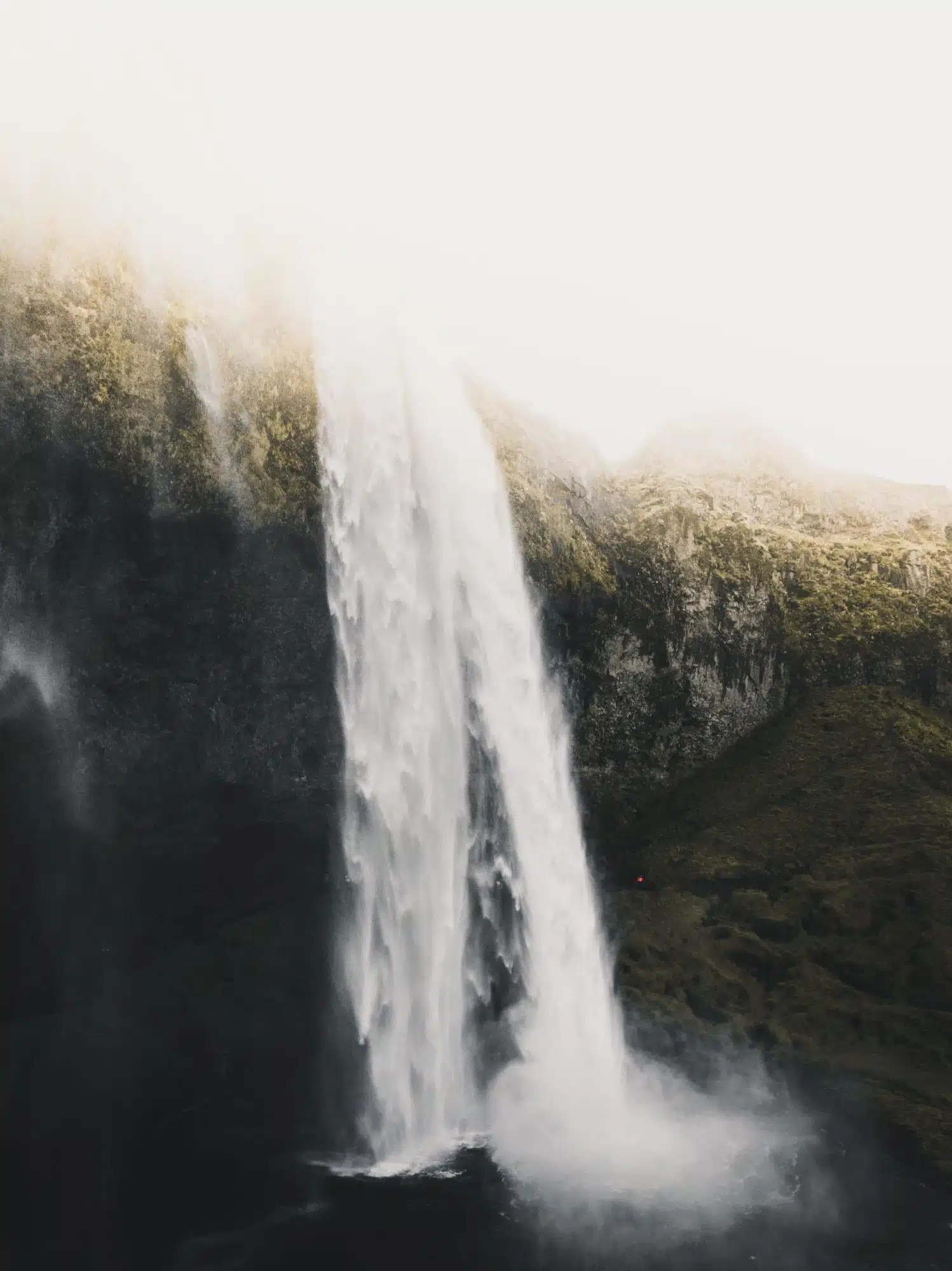
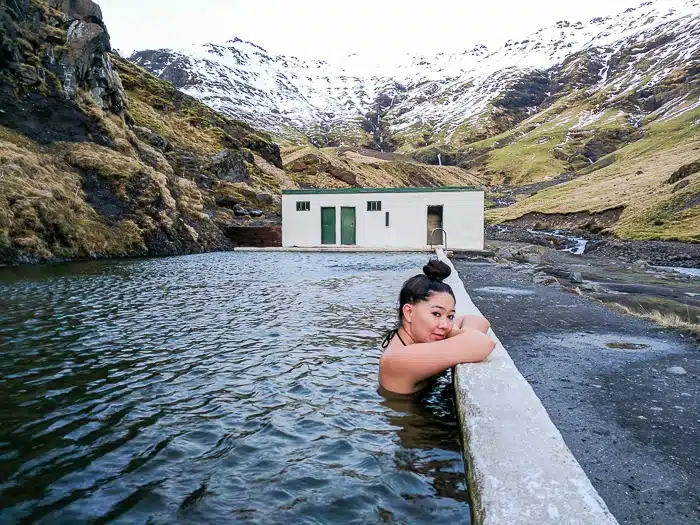
Best Time to Visit Iceland: Summer Iceland
Summer is an amazing time to go and explore Iceland. This is the time of year that the country really opens up, and you get to go to all types of different places.
The summer months run from June through August. Though you won’t be able to see so much of the Northern Lights, there is the magical midnight sun to see!
The sun rises at 3 a.m. and sets at midnight, so you are going to be able to pack a lot into your days. There’s no excuse for you staying cozy in your hotels now.
Weather in Iceland in Summer
Things are starting to get at least a little bit warmer in summer in Iceland, but if you’re used to warm summers where you’re from, don’t expect anything like that in Iceland!
The average temperature in Reykjavik in August, for example, is 51°F with highs of 55°F. Lows drop all the way down to 46°F! It’s downright chilly in Iceland in Summer.
That said, the days are usually sunny, with around 21 hours of daylight per day.
It is quite rare to see anything much warmer than those temperatures in Iceland in summer, so it is a good idea to prepare for the fact that Iceland is not going to be anything like the balmy summers you’re used to; more like fresh spring weather (so bring appropriate clothing).
Activities in Iceland in Summer
With all that midnight sun going on in Iceland’s summer, it’s a great time to go to this Nordic nation if you want to get out into nature and see what all the fuss is about—and you really should!
Summer is the PRIME road-tripping season in Iceland. You won’t be restricted by any road closures or anything in the way of adverse weather during this time, plus you won’t have to worry about driving in the dark. So if you want to get around that Ring Road—or even if you just want to drive the Golden Circle—this is the time to do it!
Be aware, however, that everyone else is thinking the same thing! Top attractions do get busy, and you definitely will see other tourists there.
The trick? Head to places early—or late! Because that sun will be in the sky no matter when you go (almost).
But if what you really want to do in Iceland is go on a road trip, then summer is really the only time of year to do so safely.
You don’t have to worry about steamy windshields, frosty car doors, snow on the road, or winter tires. And even better, you don’t even have to worry about getting back before it gets dark. There IS no dark in summer in Iceland—it’s crazy!
Another huge bonus of being in Iceland in the summertime is that you can actually save yourself some money by camping.
Sure it does still get a bit chilly—and roughing it may not be everyone’s thing—but if you come prepared with cozy sleeping bags and thermals, then you can really make the most of being immersed in all that beautiful wilderness. If you are a nature-lover, just imagine going to sleep and waking up amid all the beauty that Iceland’s landscapes have to offer…dreamy. Personally, if I did this, I would go with a camper van option. That way you could really get around the Ring Road and not have to worry about finding hotels along the way (because there aren’t many!).
Traveling in a camper van can make your Iceland trip much more affordable. Some campsites are even free, and those that charge fees are often located near low-cost or free activities, adding value to the stay. Renting a budget-friendly camper van, like those offered by Cozy Campers, could help manage expenses. Their camper vans come equipped with essential amenities, enhancing the experience of a summer camping road trip and allowing you to enjoy Iceland’s stunning scenery while keeping costs low.
Likewise, hiking in the summer in Iceland is more doable. Restrictions around craters, geysers, and even certain trails—due to ice and snow, usually—are lifted, and there is almost unlimited accessibility. All that getting anywhere and everywhere hinges on is your fitness level!
Wildlife in Iceland in Summer
Iceland has an abundance of wildlife to offer, and summertime is no different.
Puffins are still very much the animal of the month. In fact, summer is the peak time to see the puffin colonies that make their home in Iceland as they bathe in sunshine—8 to 10 million of them… and they’re super cute! Make sure to snap some pics on Insta and tag me in them so I can see them! When we visited it was early springtime so the puffins weren’t there yet.
Puffins come to Iceland in May to lay their eggs and enjoy the warmer months while their uber-fluffy chicks grow and then leave in late August.
Places to see the puffins in Iceland are aplenty—from Papey Island in the east to the Tjornes Peninsula in the north of the island, with plenty of other hotspots in between.
Many people also come to Iceland to see the whales. Prime whale watching season actually falls in June, with July and August being awesome times to spot these marine mammals, too.
All in all, the wildlife in Iceland in the summer is absolutely amazing. If you’re a fan or a budding wildlife photographer, you should definitely make this the time of year that you travel to this cool country.
Festivals in Iceland in Summer
Because of the (relatively) warm weather, the super long nights, and the school vacation, summertime in Iceland means FESTIVALS!
And there are a ton of those to get involved with. I’ll run you through a few of the various festivals you stumble across while you’re in Iceland in summer.
A pretty unique one, but also one of the most popular in the capital, Secret Solstice is when Reykjavik’s citizens and visitors alike make the most of that midnight sun. Running from June 21 to 23, this is one big party celebrating the longest day of the year. Expect music from a wide selection of artists, bands, and DJs, with lesser-known and popular acts gracing the stage.
Reykjavik Fringe Festival is a little more out there, akin to Edinburgh’s famous Fringe Festival. Full of genre-pushing creative individuals and the crowds who come to lap it up, this one definitely is an experience. Runs from June 29—July 6.
Akranes celebrates its Irish roots (yes, you read right!) each year on the first weekend of July. Expect Irish flags out in force, with music, food, and various celebrations… including a search to find to the most red-headed person in town!
If you want culture on your trip to Iceland, come in summer—the festivals pop here!
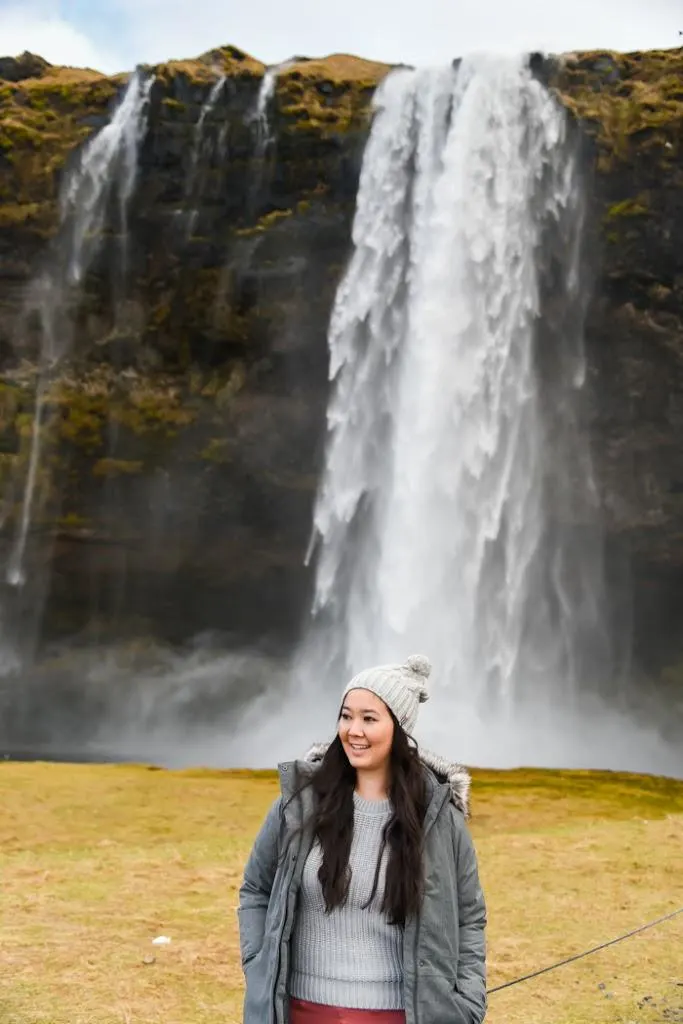
Best Time to Visit Iceland: Fall in Iceland
Fall is a great time of year to go to Iceland. This is the country’s “shoulder season”—it’s not yet cold enough to put people off completely, and many tours that run throughout summer are still operating.
It’s still a good time of year to visit because there are fewer crowds and—because the roads are still not blocked with snow and ice—the possibility of road trips is still very much there…hello, Golden Circle and Ring Road!
Falls in Iceland runs between late August and early November. There’s the chance to see fall foliage for a bit of leaf-peeping, and even the chance to see the Northern Lights…it’s a great time to visit Iceland!
It’s also a LOT cheaper than summer.
Weather in Iceland in Fall
The weather in Iceland in the fall can be quite varied. Being a transitional month, it’s not as dry and can be quite wet and windy.
Temperatures across the board in Iceland start to fall from August onward. The average high in October, for example, is around 42°F with lows of 30°F. So yeah, it’s cold!
The addition of wet weather and windy conditions mean it can feel even colder. You will want to bring layers and water/wind resistant clothing, too.
Daylight is also fading. Gone are the days of all-day sun in summer, with fall seeing just nine hours of daylight on average. It’s kind of normal though, with sunrise at 9 a.m. and sunset at 6 p.m. on average.
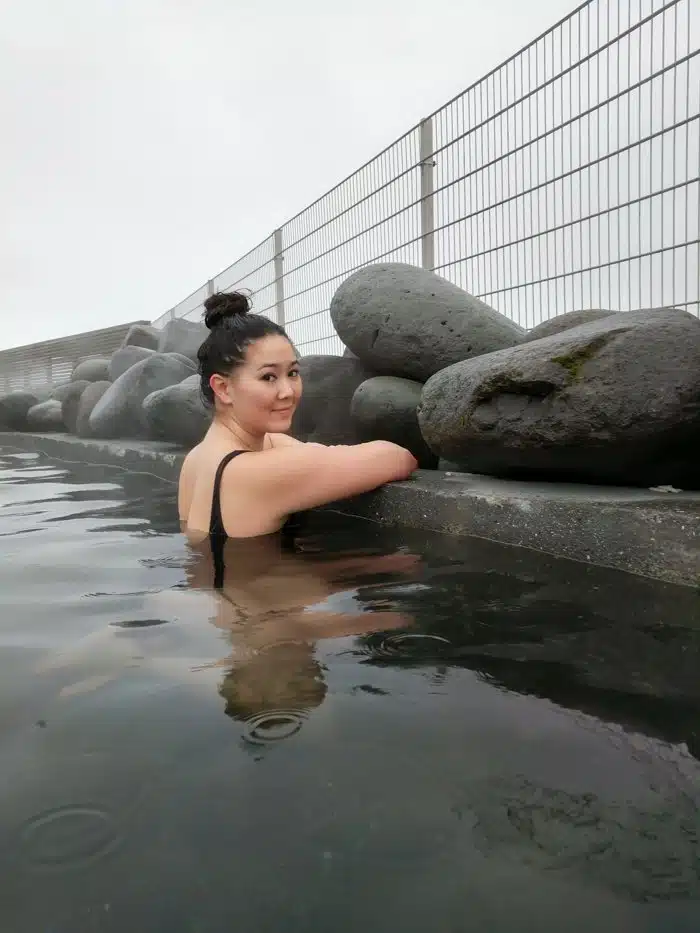
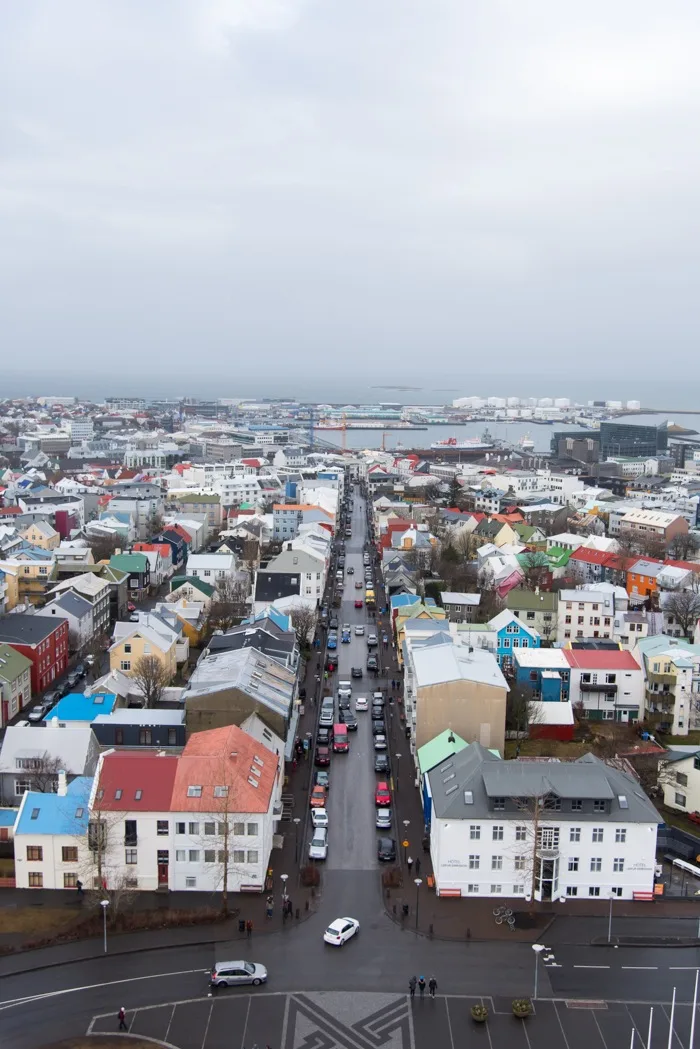
Activities in Iceland in Fall
There is actually still quite a lot of things to do in Iceland in the fall. The diverse amount of flora and fauna make it a pretty unique place to come to see some fall foliage!
There is so much natural beauty, so you can expect to see a variety of different trees and plants turning across the land…reds, oranges, yellows, and all kinds of fall colors contrast beautifully with the stark grays of the rock and the bright blue of lakes, coastlines, and glaciers. It’s beautiful!
The peak foliage time is mid to late September, so if you feel like coming to Iceland for leaf-peeping, plan your trip for this time! Major plus: school vacations are finished, accommodation is cheaper, and there are fewer crowds, too!
Another cool thing to do in Iceland in the fall is the unreal bucket list experience that is witnessing the Northern Lights.
Hiking and camping are still possible, as the weather is not totally freezing yet. The warm sun makes it much more bearable! Some trails may begin to close toward the end of fall, so make sure you check with locals and tourist sites online during this changeable time of year.
Wildlife in Iceland in Fall
It may be getting colder in Iceland when fall rolls around, but that doesn’t mean all the critters that call this island home (even temporarily) have gone yet.
There’s still a chance to spot some whales on a trip to Iceland in the fall—even humpback whales can be spotted off the coast of Iceland before they make their way south for the winter months.
The Skjalfandi Bay area is one of the top spots to go for whale watching. This is will be your last chance to spot one of these majestic creatures before the tours shut down for the winter months.
If you are super keen on seeing whales in the wild, you should make sure to visit in early fall so you don’t get disappointed. Sightings tend to thin out toward November.
Seals also live in this part of the world. With around 50% of body fat, they can definitely stand the temperatures in Iceland in the fall!
A good place to go to see seals is Jokulsarlon—the deepest lake in the country—which is home to a lot of seals. You should go before the end of September since boat tours around the lake shut down until spring.
Festivals in Iceland in Fall
Though summertime is definitely festival season in Iceland, fall still has its fair share of festivals that provide a cultural draw to this island nation as the nights start to draw in.
Notably, there’s the Reykjavik International Film Festival. Taking place over 11 days in late September, this international celebration of all things cinematic is a huge event and has been going on since 2004.
You can catch an array of international movies at interesting locations around the capital. There are also workshops, concerts, and exhibitions thrown in for good measure!
Less a festival—more of an event—is the annual lighting of Reykjavik’s Imagine Peace Tower. This artwork, designed by Yoko Ono, is meant to honor the memory of the late, great John Lennon. It’s a pretty impressive sight as it beams the words “Imagine Peace” in a variety of different languages into the night sky.
There is also a music festival which is one of the most famous events on the island – Iceland Airwaves.
Taking place over a number of venues across the capital city from November 7-10, this four-day event plays host to a selection of international and homespun talent.
Foodies take note: Iceland Airwaves is a great time to come to the city to check out what is happening in Reykjavik’s local gastronomic scene. Many events happen in cozy bars and cafes too, which is super cool!
While there are nowhere near the number of gatherings and festivals going on in fall as there are in summer in Iceland, it’s still a cool time of year to visit. Iceland Airwaves alone—if you’re any sort of music fan—should already be on your radar!
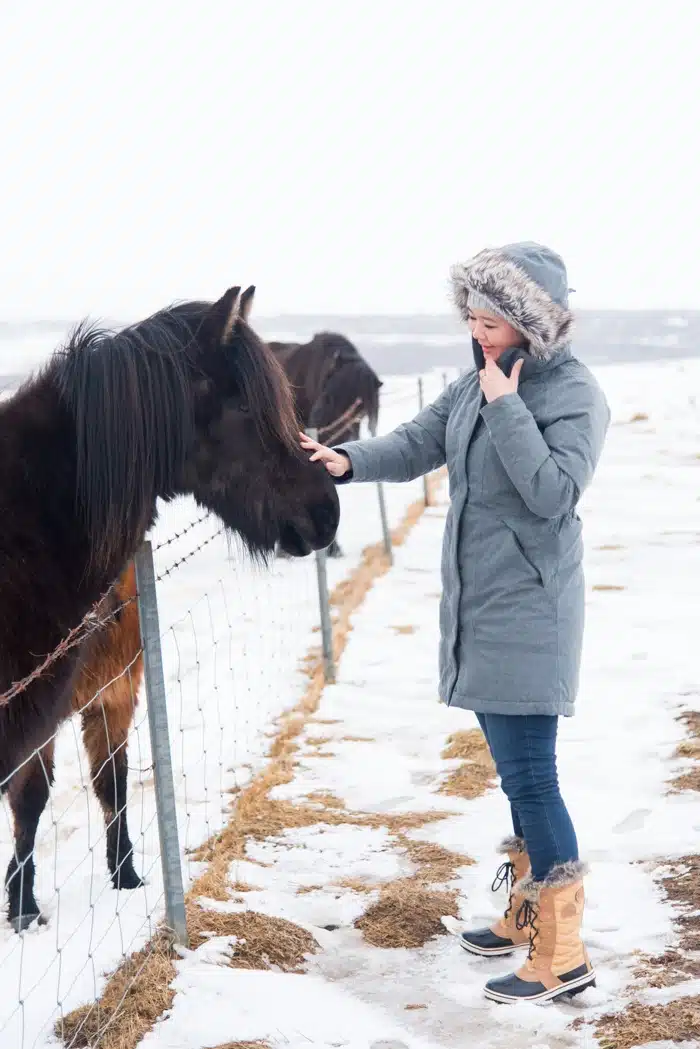
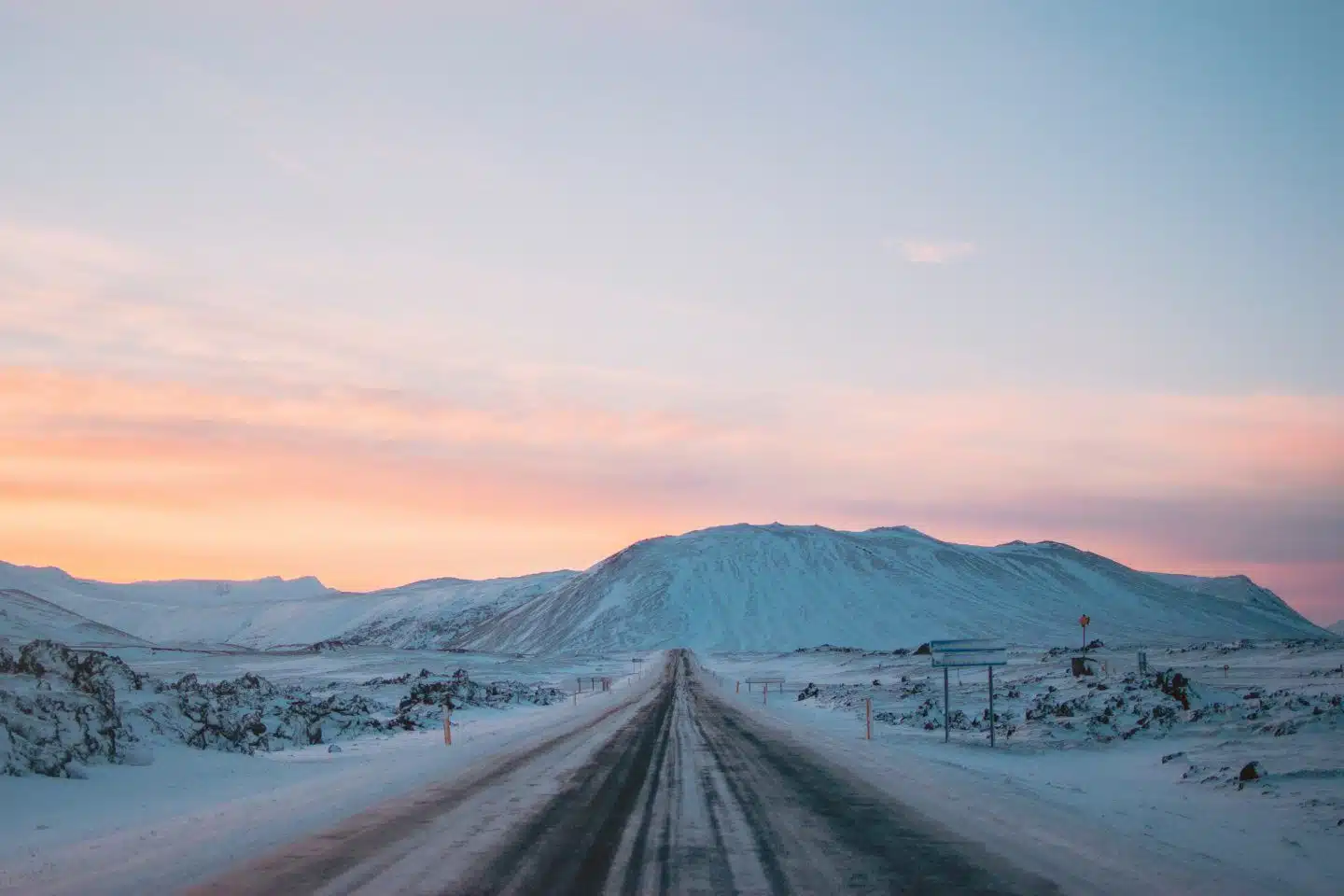
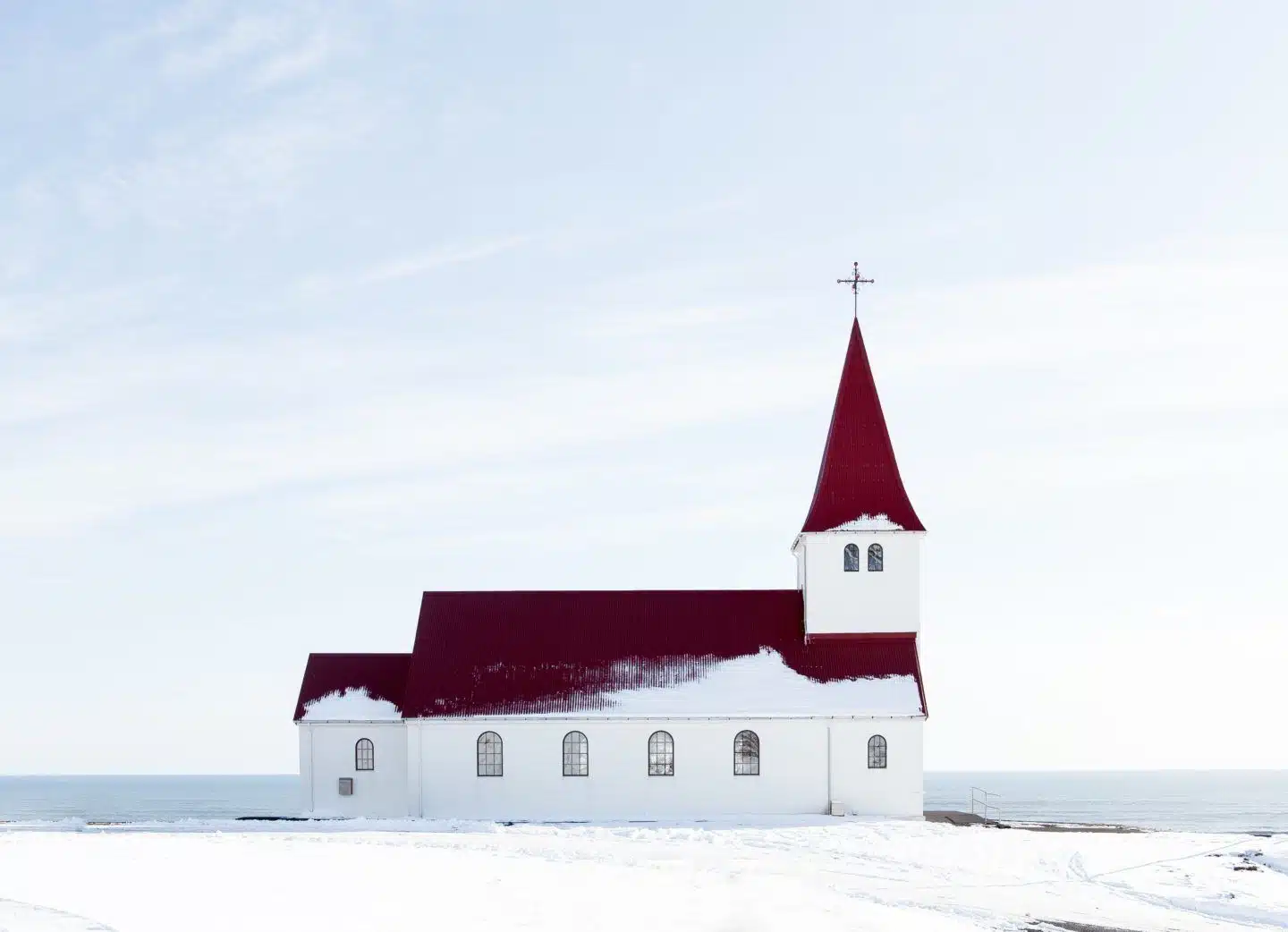
Best Time to Visit Iceland: Winter in Iceland
Winter in Iceland is a low season. It’s also freezing. But it’s also a great time to visit Iceland if you want to see what the country has to offer in its winter wonderland form.
You might be worried about Iceland’s travel in the winter months. The opposite of midnight sun is happening, a lot of roads, trails, and tours are closed, and winter weather also sees the average packing list explode with down puffer jackets and layers galore…
And while all those concerns are absolutely valid, if you are totally into the idea of seeing the Northern Lights, this is the perfect time of year to see them in Iceland!
Plus if you feel like experiencing New Year in Iceland, that would definitely be a unique experience.
Weather in Iceland in Winter
Iceland’s weather in winter is freezing. I’m not even gonna sugarcoat it—it’s seriously cold! It is called Iceland, people.
January is super cold, for example. Average highs in Reykjavik are 35°F with a low of 26°F. But in the northern town of Akureyri, it’s even colder: the high is 34°F and there can be lows of 22°F!
There are also only about four to five hours of sun per day (boo!) making this a good time of year if you want to experience a place where the sun almost never rises. It’s time to stay indoors, so make sure your accommodation is ultra-cozy, people!
Needless to say, you WILL have to pack for the weather. Think jackets, winter coats, thermal layers, and waterproof—the weather can be changeable, with storms tending to close in on the island pretty quick once they’re forecast.
Activities in Iceland in Winter
Without a doubt, winter is the best time to visit Iceland to see the Northern Lights. You need darkness to see this incredible electromagnetic ballet unfold in the sky in deep winter, you’ll practically have nothing but dark skies!
The winter months in general, however, are not a good time of year to visit Iceland if you want to do things like hiking or road tripping, which are two of the main things you really should do in Iceland. Some roads can be inaccessible and the Highlands are usually closed for business.
Even many tours that would otherwise be taking place are shut for the low season. It’s not just the lack of visitors, it’s the fact that it’s dark and cold, too!
There are still other activities you can do, however…
Like, how about ice caving?
This is actually a pretty popular pastime in Iceland, with tunnels exposed beneath glaciers, and cathedral-like caverns to explore. A good spot for this is Vatnajokull—the largest glacier in all of Europe, in case you didn’t know!
Jokulsarlon glacier lagoon is also a pretty mesmerizing place to visit in winter, with gorgeous scenery to be in awe of.
And, oh yeah, how about those hot springs? There’s nothing on Earth quite like soaking in a geothermal pool while it’s freezing out, or snowing, or even while the Northern Lights are on show. Then, do as the locals do: roll around in the snow and then jump back into the hot spring!
Other than all that, there’s Reykjavik’s dining scene to explore, nightlife to discover, and finding a cozy spot (preferably next to a fireplace) to read a book with hot cocoa.
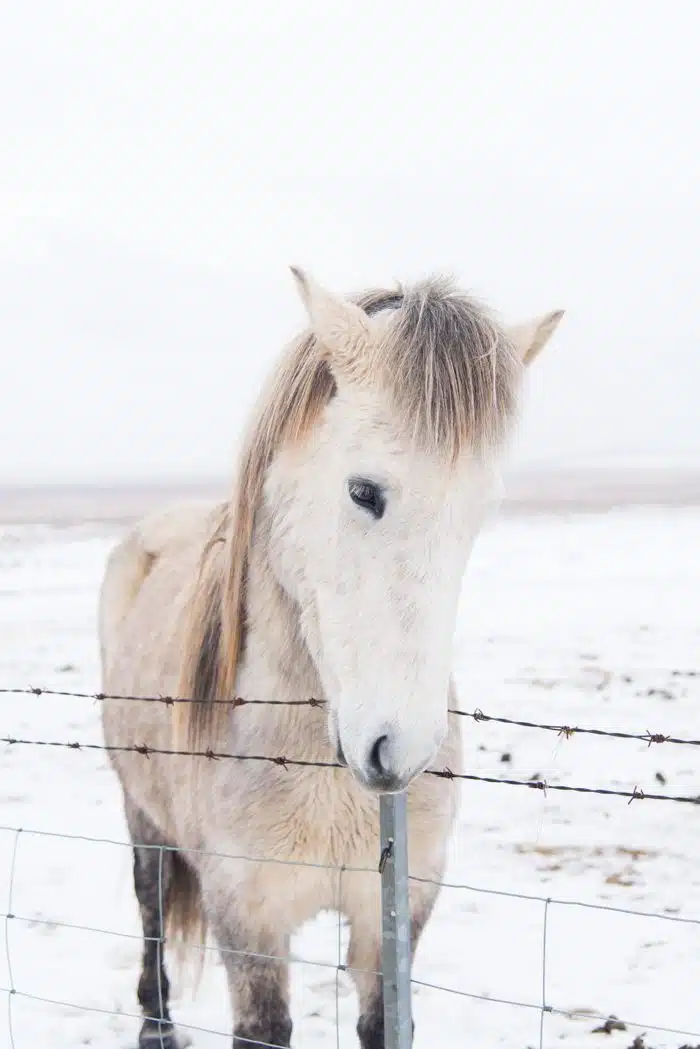
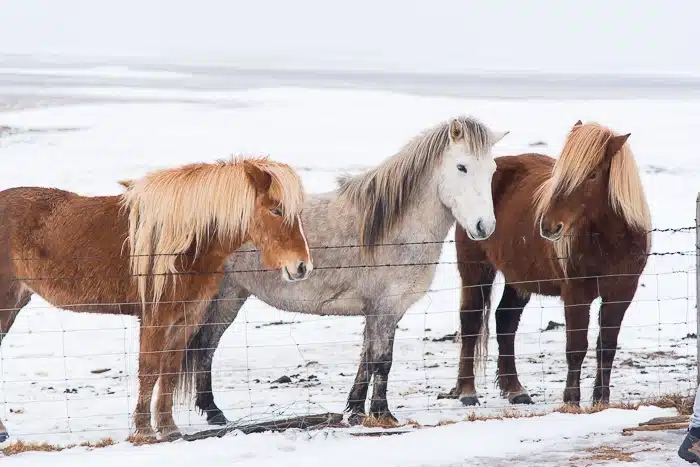
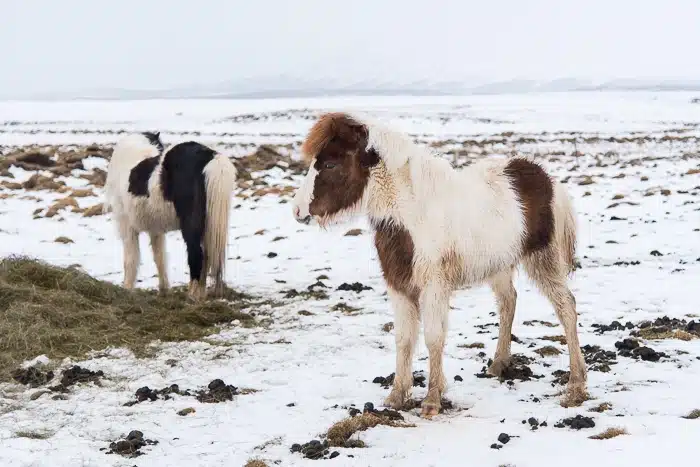
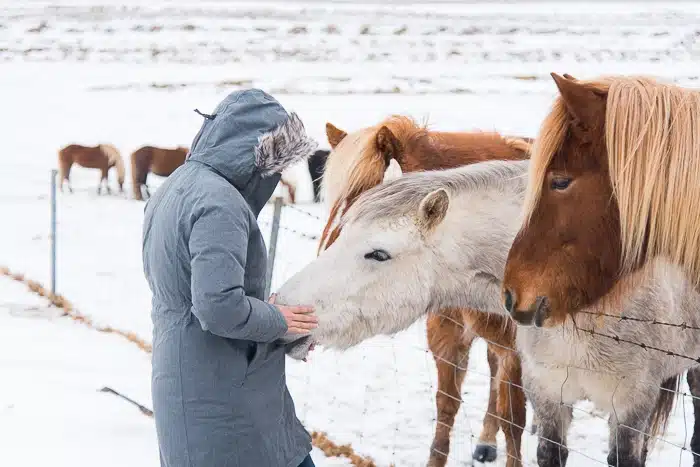
Wildlife in Iceland in Winter
Winter in Iceland means reindeer!
There are about 3,000 of these festive animals living in Iceland. They can mainly be found around Snaefell, but as winter sets in, they leave their highland homes and can be seen in the lowlands and further south.
The best time to see the reindeer in Iceland is in winter. They come to the low-lying ground to find food, and it can be totally magical to see them grazing—especially if you’re in Iceland for the Holidays!
Other wildlife to see in Iceland during winter does include whales. Though best seen up until the fall, in winter, you can still catch sight of humpback and minke whales in Husavik, as well as harbor porpoises.
Only a handful of companies will still be offering whale watching tours though.
Even though it’s not wildlife watching, you can get up close and personal with Iceland’s short, stocky horses, either with a horseback ride (sometimes to a geothermal pool!) or just by going to see them. They’re specially adapted to the cold and are very fluffy!
If you were hoping for puffins, you’ll be fresh out of luck. They won’t be returning to Iceland’s shores until the spring.
Festivals in Iceland in Winter
Iceland starts to become a true winter wonderland during its coldest time of year. And winter in Iceland undoubtedly means enjoying the festive season!
There are a whole ton of Christmas markets to be seen from late November through December across a bunch of towns on the island.
One of the biggest is the Heidmork Christmas Market, which is open every weekend from November 25 until Christmas Day. It’s super seasonal, with warming food and drink and a whole load of souvenirs and Christmassy products to buy, as well as entertainment. It’s just 20 minutes outside of Reykjavik.
Other Christmas markets include Yule Town (also in Reykjavik), and near the capital is the Christmas Village in Hafnarfjordur. Right in the city itself is Jolakras Street Food Christmas Market, which is THE place to go for anyone who’s hungry and in a festive mood!
You can’t forget the Winter Lights Festival! The Winter Lights Festival is a time to celebrate the growing sunlight after the long period of darkness. You can most definitely find this festival on anyone’s travel guide.
Christmas is obviously a thing in Iceland. Christmas Eve has an unusual tradition called Jolabokaflod (literally “Christmas Book Flood”!), where people gift books to their friends and fam.
For a New Year’s Eve to remember, there are fireworks and shows galore in Reykjavik, and an awesome atmosphere to be a part of. One of the most amazing places to see in the New Year is at the Hallgrimskirkja, complete with fireworks lighting up the night sky.
So it turns out that Iceland is pretty cool to visit year-round! Winter is definitely the trickiest time to visit, as the roads can get dicey. But if you were planning to visit and stay near Reykjavík, it’d be so fun with the Christmas markets or for NYE!
There are flowers, and seeing the puffins come back to the island in spring, midnight sun and an amazing array of festivals and road trips in the summer months, golden foliage in fall with fewer crowds to contend with, and the Northern Lights and snowscapes of winter that make Iceland truly magical.
Whether you want to spend Spring Break in Iceland, feel like spending a few weeks exploring the Ring Road in summer, or the Holiday season is calling you for a Christmas to remember, I’m basically gonna be super jelly that you’re there!
Don’t forget to tag me in your Insta pics and Stories (@wtfab) so I can see Iceland in all its glory!
Traveling to Iceland? Be sure to check out my other Iceland travel guides.
Iceland Travel Guide
Iceland Airbnbs
What to Pack for Iceland
Where to Stay in Iceland along the Ring Road
Watch my Iceland Video
FAQs
It is recommended to stay about a week in Iceland to really see what it has to offer without being rushed.
It will approximately 17hours to drive around Iceland, but you should really give yourself ~6 days if you’re looking to do the Ring Road and stop at sights along the way.
The best time to visit Iceland is in the spring or summer. The summertime in Iceland is filled with the best weather and most places will be open. And in early springtime, you still have the chance to see the northern lights.

Elise Armitage is an entrepreneur and founder of What The Fab, a travel + lifestyle blog based in California. At the beginning of 2019, Elise left her corporate job at Google to chase her dreams: being an entrepreneur and helping women find fabulous in the everyday. Since then, she’s launched her SEO course Six-Figure SEO, where she teaches bloggers how to create a passive revenue stream from their website using SEO. Featured in publications like Forbes, Elle, HerMoney, and Real Simple, Elise is a firm believer that you can be of both substance and style.




